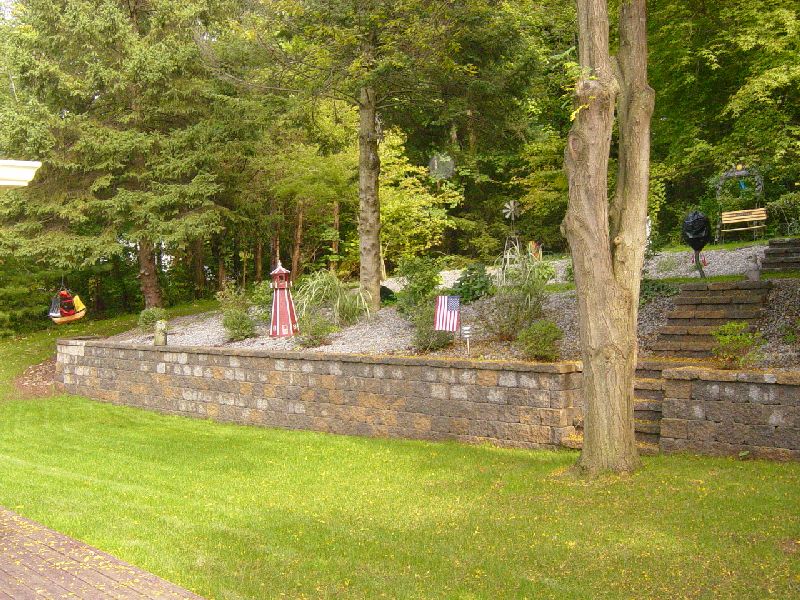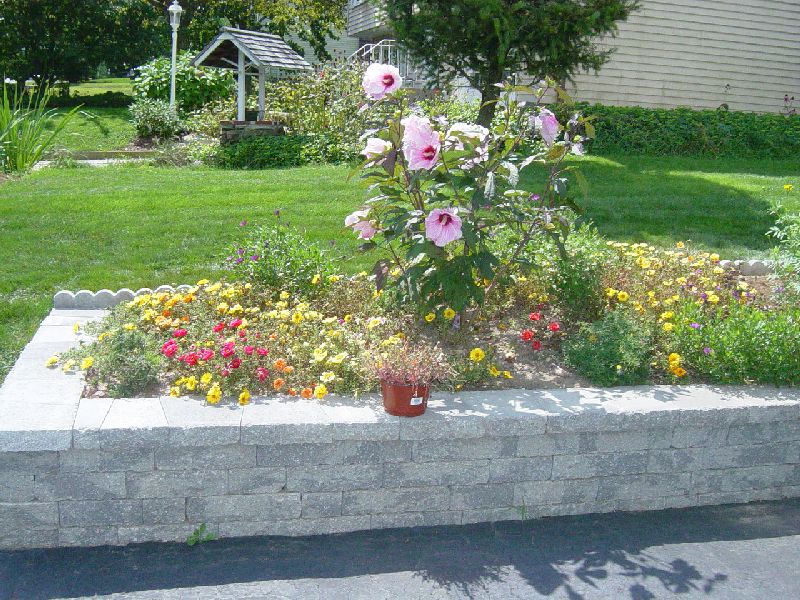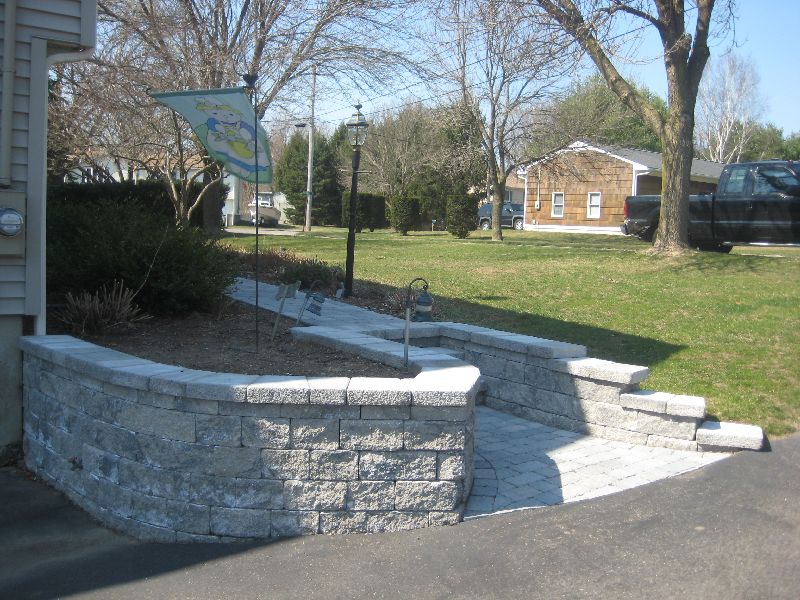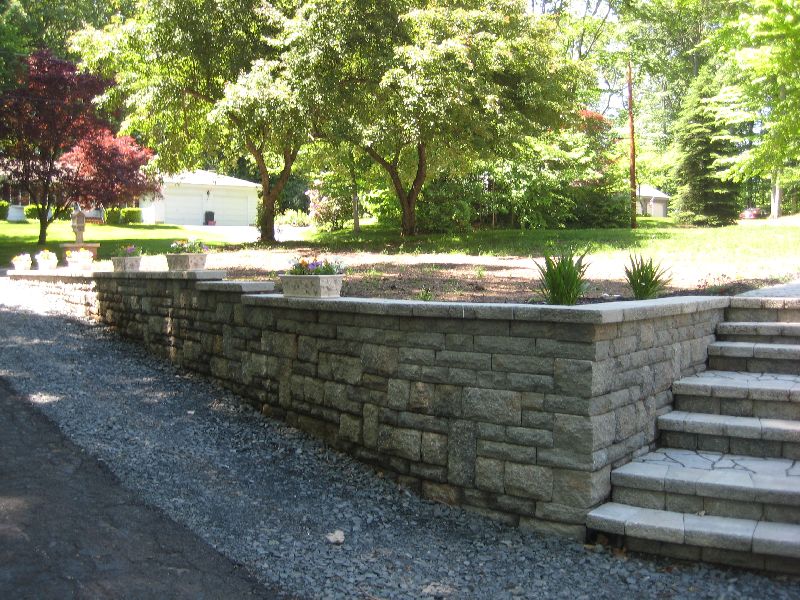Retaining Walls are used in many applications. Some hold back the grade of land that is higher than a driveway, or to prevent excess erosion around a house. Most homes have retaining walls made from railroad ties, which over time, can rot away and invite common pests such as termites, carpenter ants, and bees. All of which you do not want near your home. Stone retaining walls not only eliminate these common problems, but stone can look so much better than wood, and will last a lifetime, unlike wood which lasts only a few years. When TradeMark Masonry replaces an existing wall with stone, every effort goes into making sure the wall will stand the test of time, and mother nature. At least three feet of soil is escavated from behind the wall and replaced with 1 3/4 inch drainage stone. A drainage pipe, properly placed and pitched, collects any residual ground water and properly evacuates the water to a safe location away from the house.
Retaining walls can be used to terrace steep grades of land to allow ample gardening and help prevent further erosion. Terracing is the use of several separate walls strategically placed among the landscape to maximize the total usage of the homeowner`s land. Another great use for a retaining wall is to build a raised garden bed alongside a house on an incline. This not only covers up the unsightly foundation of the house, but it also makes personal gardening easier at waist level. Landscape walls are non load bearing walls usually only 2-3 rows high and can dramatically enhance an area of the lawn. A small landscape wall around a large tree can easily be a focal point to any landscape.





